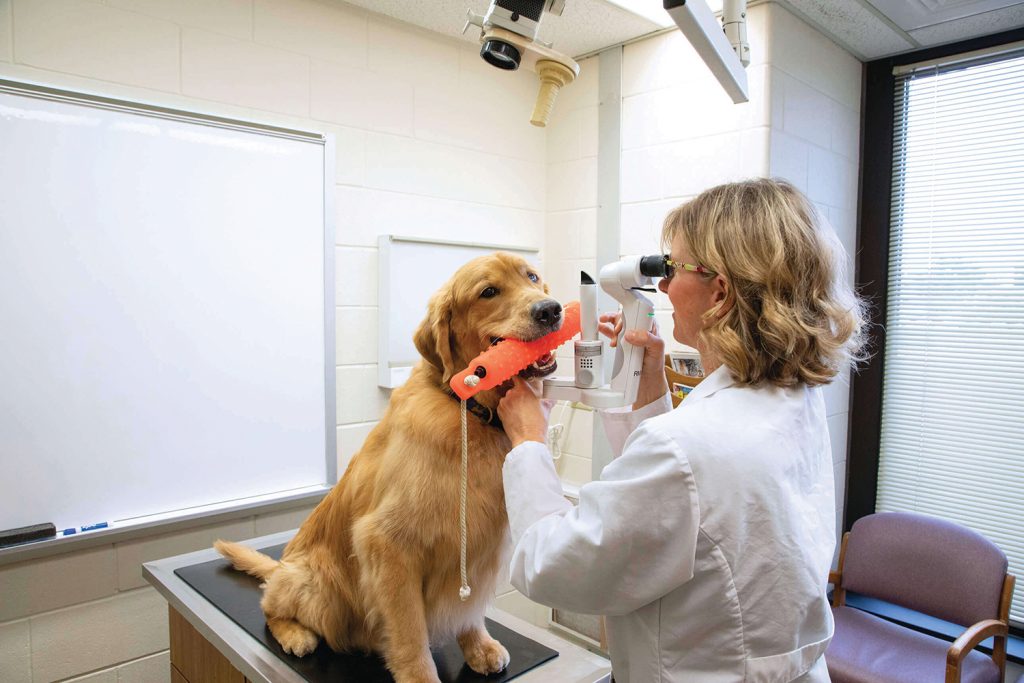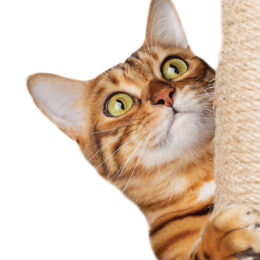
At least 2 billion people around the world have vision problems – but how do you know if and when your pet is struggling with its own eyesight?
“Sometimes animals struggle with the same eye problems that people do. They’re just not as good at telling us when something is wrong,” said Dr. Wendy Townsend, associate professor of ophthalmology in Purdue University’s Department of Veterinary Clinical Sciences.
Townsend encourages pet owners to be cognizant of their pets’ eye health for that very reason. Just because something isn’t blatantly obvious doesn’t mean their eyes are always in perfect health.
“Animals are good at compensating when something isn’t working right. So, if one eye is bothering them, they’ll just rely more heavily on the other eye,” Townsend said. “And most of our pets don’t need to have super-sharp vision to lead normal everyday lives. But in some cases – like with dogs that participate in agility – being able to focus both near and far is important.
“The eye might be small, but it’s a powerful organ that we all use and it allows me to work across a wide variety of species,” Townsend said. “I frequently have clients tell me, ‘I had no idea this was an option,’ or, ‘I didn’t know there were eye doctors for dogs.’ The impact this field can have on our patients and their quality of life can be significant.”
Although her patients include mostly dogs, horses and cats, Townsend’s research at Purdue is focused on one particular popular dog breed — golden retrievers — and an inherited eye disease that is almost exclusively found in purebred golden retrievers. That is golden retriever pigmentary uveitis.
It’s a disease defined as inflammation of the part of the eye — the uveal tract — that includes the iris or the colored part of the eye. The onset and diagnosis usually occur when the dogs are older. The disease can often result in blindness due to cataracts and glaucoma, and there are no current methods to prevent or reverse it. The disease affects about 10% of senior golden retrievers and can appear in some golden retriever crosses – especially Labrador and golden retriever crosses. “That becomes a concern because Labrador and golden crosses are frequently used as seeing-eye dogs,” Townsend said.
That’s why Townsend said having dogs screened – especially service dogs – is critical. “The earlier you can catch something, the better,” Townsend said. “That goes for all vision problems with any animal.”
Warning Signs
Early detection of problems is key to protecting your pet’s eyesight. If you see any of these following signs, contact a veterinarian right away:
- Squinting or holding the eyelid shut
- Tearing
- Scratching at the eye
- Redness
- Cloudiness
- Vision loss (bumping into things, not focusing)
- A distended third eyelid
- Crusty discharge



